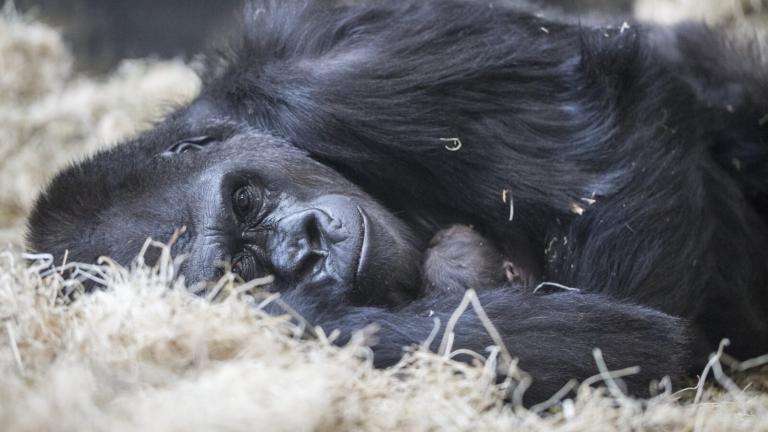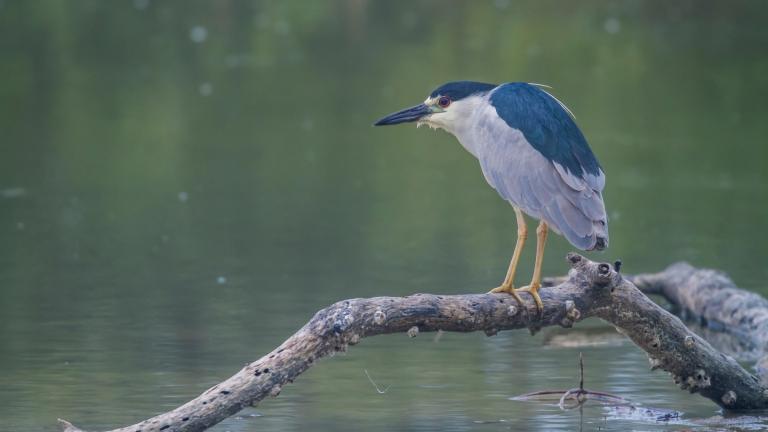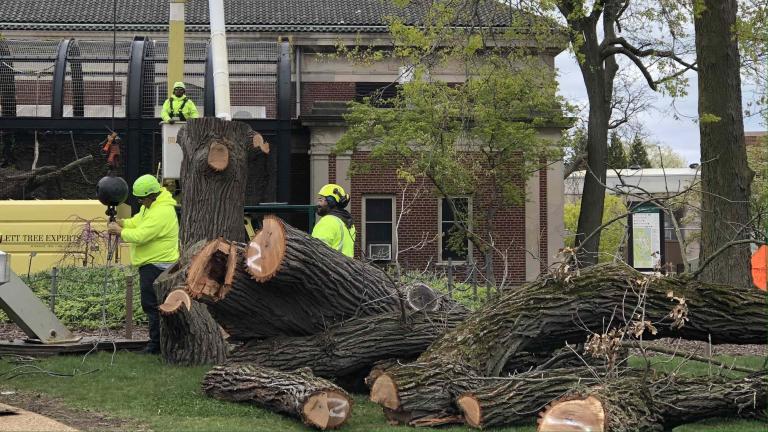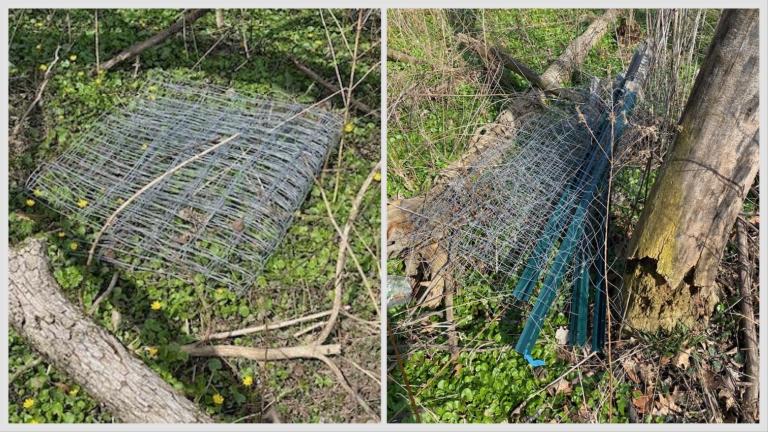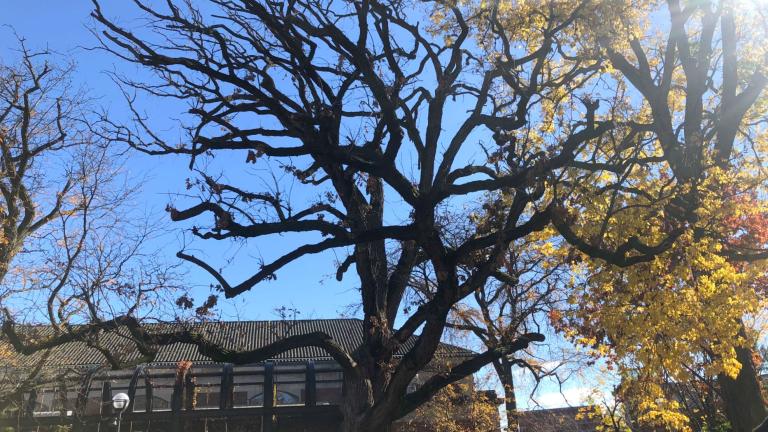 Groundhog chowing on clover. (Shenandoah National Park)
Groundhog chowing on clover. (Shenandoah National Park)
For an animal that has its own holiday, the groundhog kind of flies under the radar.
Aside from their seeming tolerance for being handled by men dressed in anachronistic clothing, what do we know about these critters?
We turned to Liza Lehrer, assistant director of Lincoln Park Zoo’s Urban Wildlife Institute, for answers.
What’s in a name?
First things first, we had to clarify the name: Is it groundhog or woodchuck?
“Technically, the scientific community tends to use the term woodchuck,” Lehrer said. “Groundhog is more broadly known. I kind of interchange between the two, but if I’m writing a research paper, I use ‘woodchuck.’”
The scientific name, Marmota monax, puts the groundhog in the same family as chipmunks and prairie dogs. All of them are part of a group of burrowing animals known as ground squirrels, of which the groundhog is the biggest.
“They can get up to 14 to 15 pounds — the size of a large cat. I’ve handled some really big woodchucks,” said Lehrer, who studied groundhogs for her master’s thesis at the University of Illinois.
Where do they roam?
What intrigued Lehrer about woodchucks is their impressive range and adaptability. They’re found everywhere from Alaska to Georgia, the Northeast to the Midwest, and yes, that includes Chicago.
Lehrer once spotted one near LaBagh Woods on the Northwest Side, and a trail camera caught one in Homan Square. A colleague of Lehrer’s reported one in a neighbor’s yard in Ravenswood Manor. And then there was the time someone called the zoo to report a groundhog scurrying across Clark Street.
“They wondered if it had escaped,” said Lehrer. (It hadn’t.)
The Chicago River offers an excellent corridor for groundhogs to travel along, Lehrer said, so she wouldn’t be surprised if kayakers were to spot woodchucks along an embankment — and possibly mistake them for some other brown furry creature.
“A lot of people think they look like beavers,” Lehrer said. And yes, groundhogs can swim.
What groundhogs really like is edge habitat — where a forest or wooded lot meets an open grassy area. They can forage for food in the grass while keeping an eye out for predators — coyotes, hawks or foxes — and retreat if necessary. (A groundhog’s “vigilant pose” — standing on its hind legs — is a hallmark of ground squirrels.)
Suburban office parks have become a sweet spot for groundhogs, Lehrer said. “They can graze on all that grass and not have to cross a lot of roads.”
And woodchucks, make no mistake, are serious about food.
Between April and September, they live to eat and eat to live, trying to pack on as much weight as possible before winter. “That is their true focus,” said Lehrer. Dandelions are among the herbivore’s favorites, along with mulberries, clover and grass.
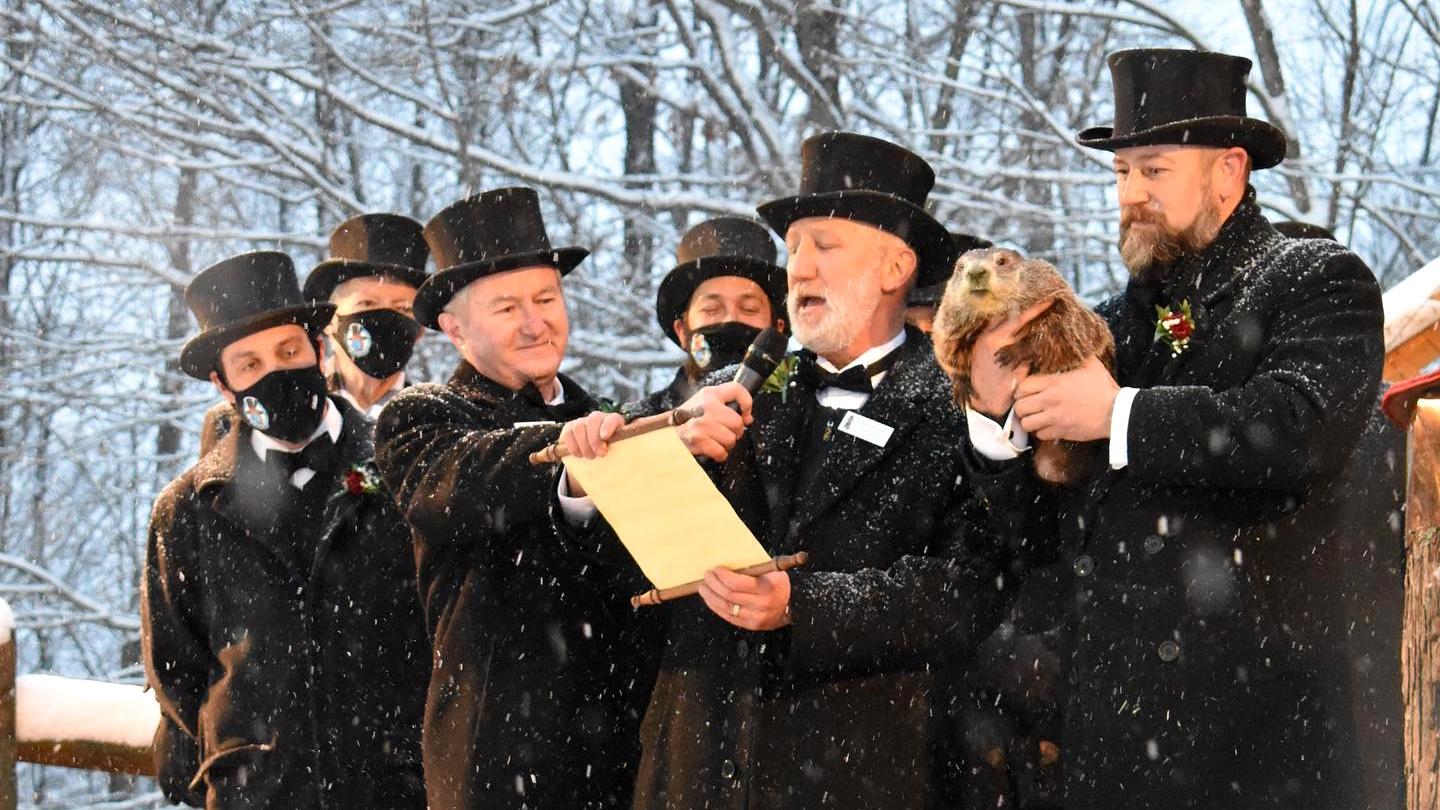 Punxsutawney Phil, Groundhog Day 2021. (Punxutawney Phil / Facebook)
Punxsutawney Phil, Groundhog Day 2021. (Punxutawney Phil / Facebook)
Can they really predict spring?
Kinda, sorta, maybe — though it has nothing to do with seeing a shadow.
Groundhogs are true hibernators, spending winters underground in burrows dug especially for the deep sleep, separate from the burrows where groundhogs live during the rest of the year.
Their body temperature drops to just a few degrees above the burrow’s and their heart rate slows, Lehrer explained.
Males begin to emerge in February to claim their territory and prepare it in advance of mating season. “It’s like they roll out the red carpet for the females,” who typically emerge in March, said Lehrer. (And then the fellas skedaddle to leave parenting duties to mom.)
So in that sense, yes, the appearance of groundhogs would tend to signal light at the end of winter’s tunnel. At some point, this got mixed up with the European tradition of Candlemas — specifically a German interpretation of the holiday involving hedgehogs — and here we are in 2023 with the weird annual ritual of Punxsutawney Phil being trotted out for a photo call and old-timey proclamation.
“Why it’s continued to take hold in our culture, I can’t say,” Lehrer said of Groundhog Day. “I think it’s just that time of year when we’re all looking for a little encouragement.”
Legends and myths aside, a groundhog’s real talent is for digging.
“They can move a lot of dirt really quickly,” said Lehrer. “They have long claws and very powerful, strong muscular legs.”
Less adept species, like possums, rely on groundhogs’ skills and take shelter in the burrow systems groundhogs excavate. That service to their fellow critters is among groundhogs’ benefits to an ecosystem, along with aerating soil.
What does the groundhog’s future look like?
In Illinois, groundhogs have lost a lot of habitat to farmland, but they’re doing well in mid-sized urban areas, Lehrer said.
Tracking shows that one of the ways woodchucks have adapted to urban life is by restricting their movements, limiting their range to just 10% of what it would be in a rural area. “Because of the amount of cars, essentially they move a lot less in urban areas,” Lehrer said.
On the upside, the presence of humans translates into fewer natural predators, and residential gardens offer woodchucks a buffet of greens. But that also creates conflict, according to Lehrer.
“Some folks think of them as a pest species” — either for getting into a garden or burrowing under a foundation — she said, and pest control services are a not-so-natural predator groundhogs have to contend with.
If only the critters had a built-in prognosticator for that.
Contact Patty Wetli: @pattywetli | (773) 509-5623 | [email protected]

